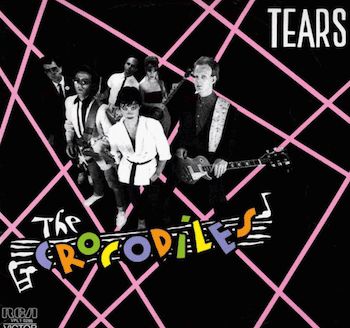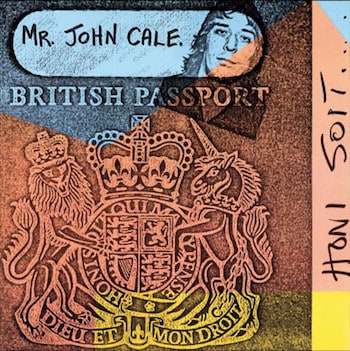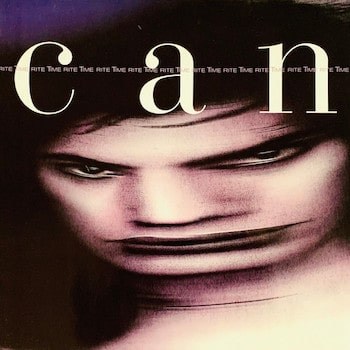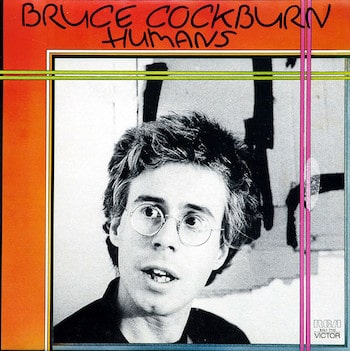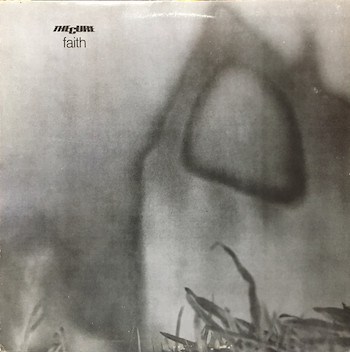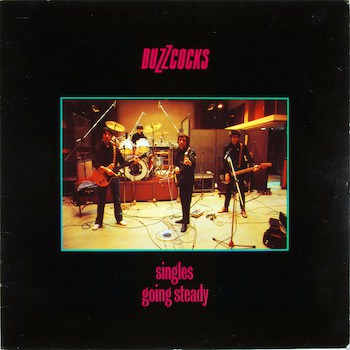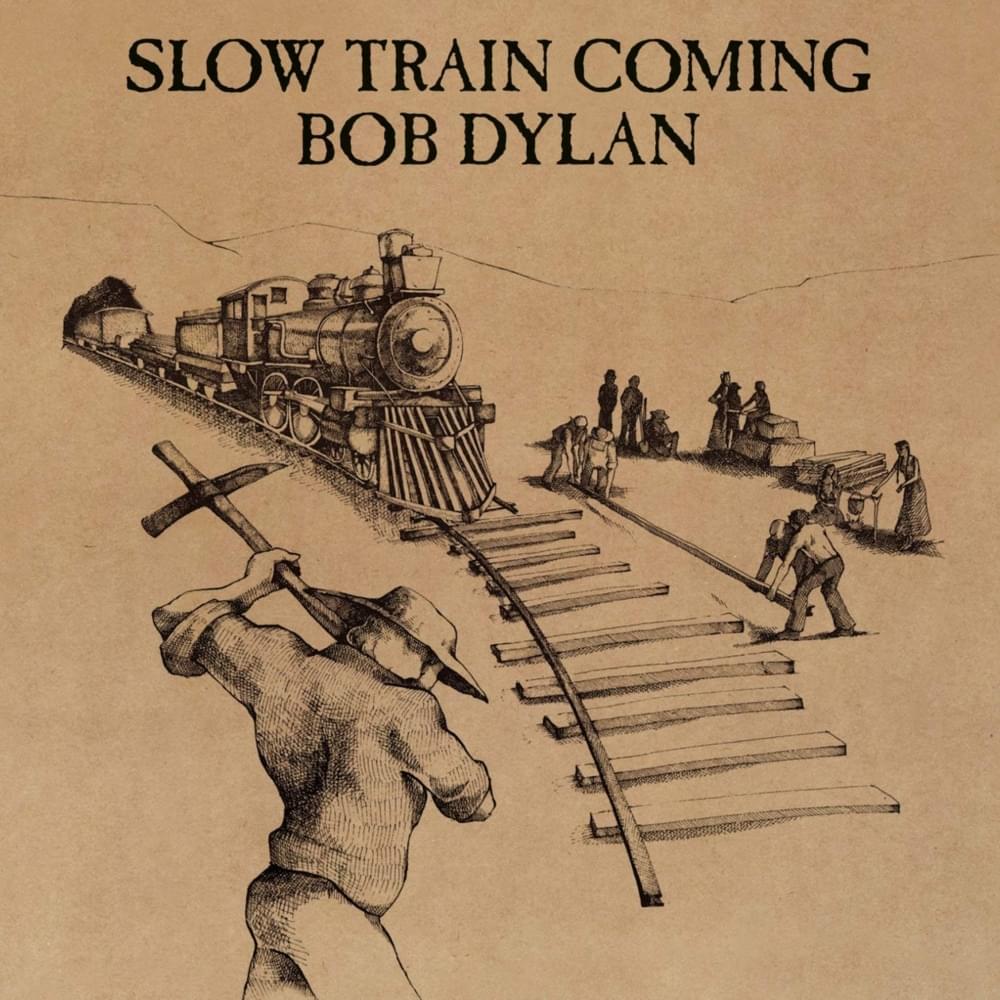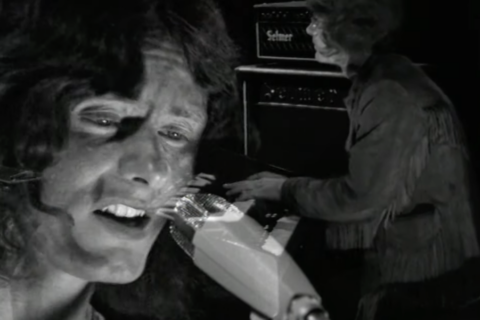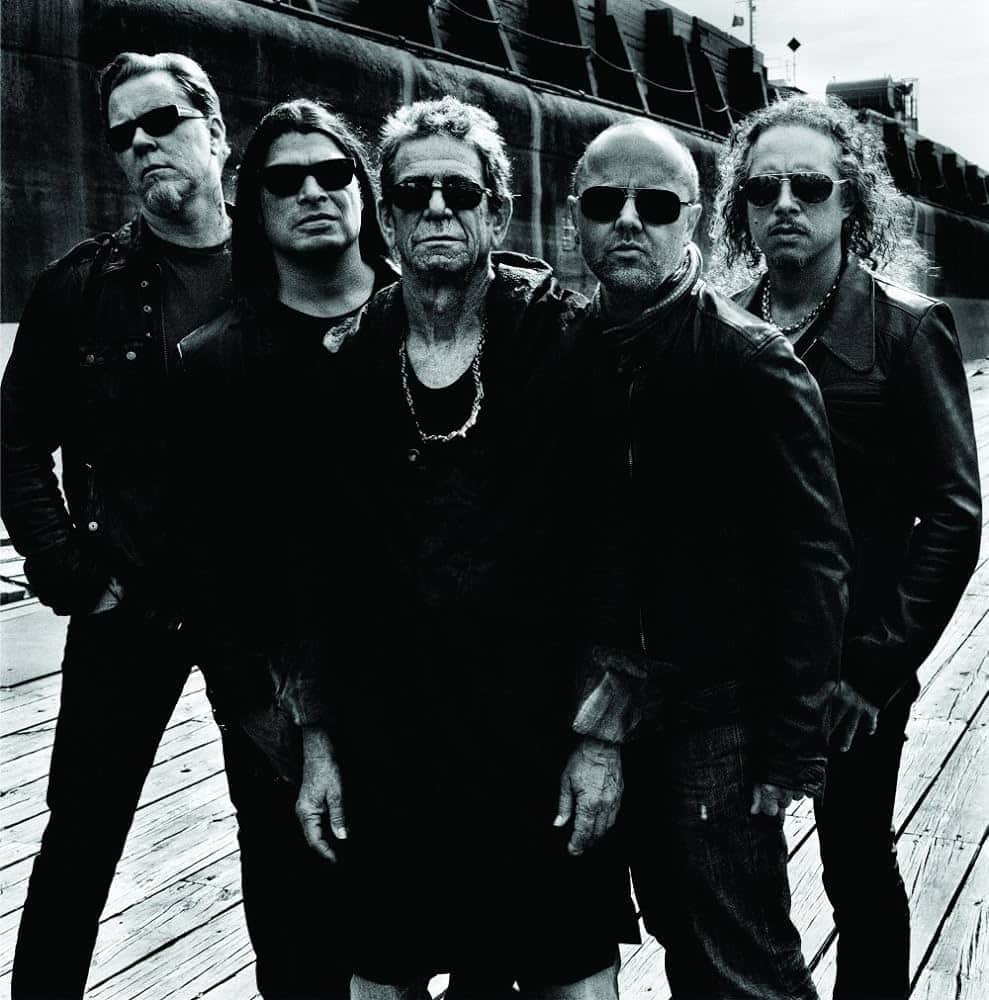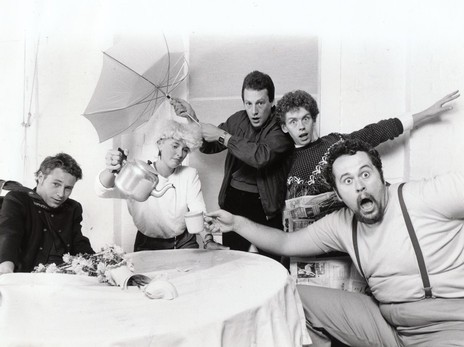Gary Steel is slowly compiling all his album reviews in one place. This is a work in progress, or what we call a “live document”. Today is the letter ‘C’.
 Cabaret Voltaire – The Voice Of America (Rough Trade)
Cabaret Voltaire – The Voice Of America (Rough Trade)
1981/In Touch
A yearning, piercing, toothache of a synth sound weaves through most CV music. It could be an exaggerated, echoed sax, or even electric violin. But it doesn’t matter what makes the noise in CV music: sound effects. The CV voice is distinctly alien (Doctor Who’s Dalek refugee) yet it evokes human reaction. The music doesn’t glorify machinery; it tramples all over it by using and abusing it. It faces fascism.
Musical instruments are filtered into combinations of pure sound. But the effect of this filtered process isn’t one of dilution. Rather more like the effect of the sun on mirror; tripled intensity. CV music yearns, why not? CV music is angry, why shouldn’t it be? Is it that passe to be pissed off with the way things are going, or the way things are?
CV uses lumpy, throbbing synthesized bass/drums. The weirdest, nastiest wedges and knives of noise, bursts of sound, dazzle the senses. CV are real weird. It’s not the soundtrack of the apocalypse they’re making, but it is that of a world on its edge. And it’s as accessible as the listener chooses it to be. (And this review is terribly pretentious! Sorry!)
The Voice Of America is the most ‘commercial’ CV album yet. The best tracks are on the first side: ‘The Voice Of America/Damage Is Done’, ‘Partially Submerged’, ‘Kneel To The Boss’, ‘Premonition’. 9/10
1981/In Touch
John Cale is a difficult artist to pin down. In the Velvet Underground he’s portrayed as playing second fiddle to Reed’s genius, his importance in the band’s context generally underplayed. And his solo jaunt this past decade has been wildly erratic, not to mention eclectic.
Honi Soit (pronounced ‘o nee swa’) is the first studio recording for some years, following as it does last year’s (unavailable in NZ) live LP. I’ve followed the man’s work sporadically at best, and when faced with this new album find myself falling on cliches to describe music which avoids them so easily; music which is definitely more than the sum of its parts (see?) One can describe Cale as a musician (schooled in viola and a multi-instrumentalist), but that is as limiting as the singer/songwriter description.
Cale’s voice is a striking thing: it has gained in authority over the years. It becomes more world-weary and more angry as time goes by. It teeters at the edge of rage and madness (listen particularly to ‘Wilson Joliet’).
‘Dead Or Alive’ and ‘Fighter Pilot’ are good representations of Cale’s more accessible side, being fairly conventionally tuneful sketches. Mostly, the band’s general gait is a strolling hard rock, a dramatic diversion to be found, for example, on ‘Streets Of Laredo’.
Honi Soit is a deadly strong album which I find impossible to review. If you need some thinking person’s rock and want something to really listen to and take time with you couldn’t do much better than this. 8/10
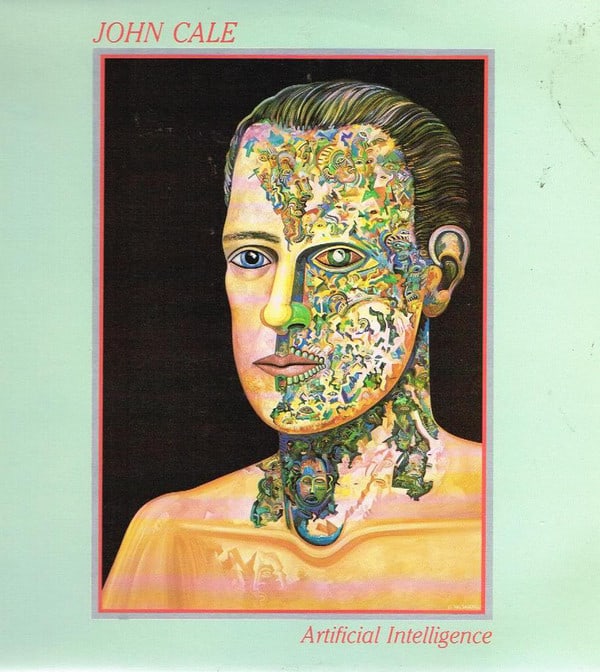 John Cale – Artificial Intelligence (Beggars Banquet)
John Cale – Artificial Intelligence (Beggars Banquet)
1986/Evening Post
Cale goes techno on a bunch of sad, half-hearted songs and tepid arrangements without dynamic. This simple-minded chug is a sad waste of Cale’s major songwriting talents. He barely bothers except for the odd cutting lyric or hint of anger showing through the barren surroundings. And why does someone of Cale’s proven compositional brilliance need James Young (of The Faction) for “additional composing and arranging contribution?” He must be in dire straits indeed. What’s wrong, John, need a new motor? 5/10
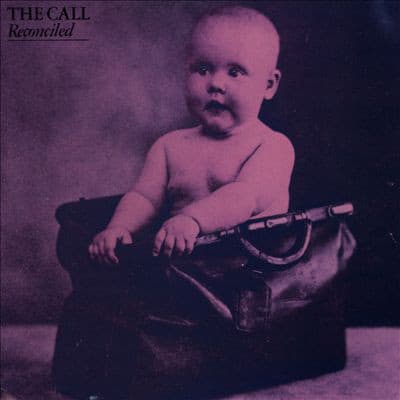 The Call – Reconciled (Elektra)
The Call – Reconciled (Elektra)
1986/Evening Post
Here is a rare beast: a record best described as good rock music. Along the line, songwriter Michael Been has managed to assimilate some of Jim Morrison’s mannerisms into his unusual baritone, but The Call are no Doors imitators. They simply manage a feat which, given its scarcity these days, skyrockets Reconciled into the realms of the astonishing.
You see, it’s an Intelligent Rock Record, too. Been thinks, then he actually puts down his thoughts in an articulate manner before singing them in an expressive way to music which is mainstream rock, but which has enough guts and just enough off-beat goings-on to maintain the interest.
It may seem predictable to say it, given the guest appearance by Simple Minds’ Jim Kerr on the album, but the big drums and keyboard melodies do occasionally echo that group. Their affection for modernity doesn’t subsume their own character, however, and Reconciled ultimately stands as unpretentious, powerful and passionate. 7/10
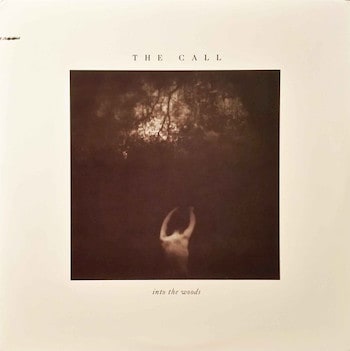 The Call – Into The Woods (Elektra)
The Call – Into The Woods (Elektra)
1987/Evening Post
To be honest, now that I’ve got The Call, just about everything else seems redundant. The Call’s newie, Into The Woods, is stunning. It’s a remarkable work with a rare combination of angst, anger and outright passion, and I can’t think of anything new in the past year that has made me actually feel.
This will sound ludicrous, but Into The Woods comes on with all the outraged, disgusted honesty of England’s defunct Joy Division. Give that band an American origination, and a singer (Michael Been) whose voice bears an uncanny resemblance to a disembodied Bruce Springsteen coupled with the spirit of a grizzly bear whose cubs are being threatened, and you have something along the lines of The Call.
Then again, I guess there are those who watched the inspirational ‘I Don’t Wanna’ video with a mixture of disdain and indifference. With you, dear fellows, I share nothing except the air we breathe. 8/10
Camel – I Can See Your House From Here (Decca)
1980/In Touch
A creditable enough album from Camel, now minus leader and keyboardist Peter Bardens. On Side 1 they go for commerciality while never losing sight of their pomp-rock roots entirely, while on Side 2 they play laid-back music for late-night listeners.
Unfortunately, this is lacking in Barden’s inspiration and distinctive playing abilities. It’s all very pleasant. Indeed, a quality release, but there’s nothing that jumps out and says “We are Camel!” 6/10
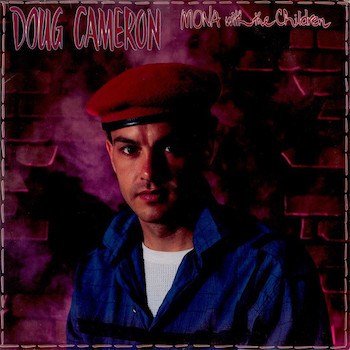 Doug Cameron – Mona With The Children (Snappy) 12” EP
Doug Cameron – Mona With The Children (Snappy) 12” EP
1986/Evening Post
Secular social conscience in an ode to a Baha’I girl executed by the Iranian authorities, Mona With The Children is the first work by Canadian songwriter Cameron. Fellow Baha’is Seals And Crofts add their creamy chicken soup harmonies to a sound that’s as safe and sterilised as pasteurised milk.
It’s cripples by its own impeccable good taste, but for those who like their bitter pills with a sugar coating, this could be the perfect product. Cameron’s AOR ditty can be sampled again on the b-side as a (pointless) extended mix, and there’s another boppy pop tune called ‘One Moment Of Love’. 5/10
1990/RTR Countdown
So you’ve never heard of Can? This can only be through an enormous oversight. No, it’s not your fault, but the media’s and the record industry’s. Can, you see, is one of the most influential, adventurous and original of all rock groups. Leading a wave of ‘Kraut Rockers’ from Germany in the 1970s, Can created a hypnotic, intense, minimalist, humorous style which left its mark on a generation of New Wavers (including Talking Heads and PiL) and even sound samplers/rappers. Rite Time is their reformation album and it’s hugely interesting to anyone desirous of expanding their mind and/or listening horizons. Demand it at your local record emporium. 7/10
Carmel – The Falling (Liberation)
1987/Evening Post
When Carmel stresses a note, she sounds like she’s gagging, but it’s sort of fetching. All Sade comparisons aside, The Falling is an adventurous record; minimal instrumentation gets the best out of double bass, bubbly electric organ, and percussion. Often straddling the divides between torch-singing, soul, funk and jazz, Carmel works best when it’s slightly wacky, as on the Brian Eno-produced ‘Mercy’ and ‘Mama Told Me Not To Come’. 6/10
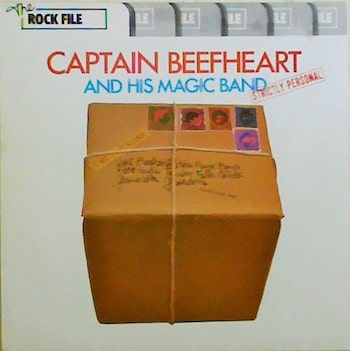 Captain Beefheart – Strictly Personal (EMI)
Captain Beefheart – Strictly Personal (EMI)
1968/1980/In Touch
Once upon a time, Beefheart’s music was seen as inaccessible, but after the new wave onslaught of the past few years, his music now seems friendly and approachable. Groups like Pere Ubu and Chrome have borrowed heavily from the man and his music, but the Captain differs in that his music and subjects are unfailingly down to earth.
Surprisingly, the re-released 1968 classic Strictly Personal loses none of its edge 12 (12!) years on. Aural gratification (high hi-fi) may be more easily achieved with modern releases, but final fulfilment is in the Magic Man’s own humorous, humane and deeply felt muse.
This is the second Beefheart album proper, and it matches his own space age rural blues and roaring vocalese with the white noise of ‘60s psychedelia. Some of the sound effects sound dated, but the semi-dublike quality is surely to be appreciated.
The meat on this platter are the epics: ‘Safe As Milk’, ‘Trust Us’, ‘Son Of Mirror Man – Mere Man’ and, over on side 2, ‘On Tomorrow’. These consist of a solid clatter of anthemic, dirge-like pleas and chants. Not just the themes for a generation, but those of ageless idealistic existence.
The two oddities are the bass-lacking opening track, ‘Ah Feel Like Ahcid’ and the sarcastic ‘Beatle Bones And Smokin’ Stones’, while the album finishes on a note of disordered anarchy with ‘Kandy Korn’. Side 2’s stand-alone track is the timeless pulse-blues of ‘Gimme That Harp Boy’, a blues to end them all.
Stick it between Sergeant Pepper and New Picnic Time in your music mountain. Don’t abuse the privilege. 8/10
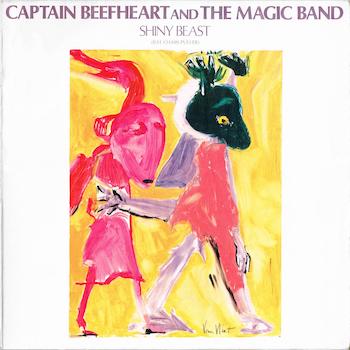 Captain Beefheart – Shiny Beast (Bat Chain Puller) (Virgin)
Captain Beefheart – Shiny Beast (Bat Chain Puller) (Virgin)
1980/Evening Post
Don Van Vliet’s music has a primitive intelligence. It’s music for the head and the body, truly organic body language music, full of magic rhythms and human psyche insights. A natural melding.
Perhaps Vliet (alias Captain Beefheart) is just too real, too supernatural, among all the trendy clutter comprising our pop world. Is that why he seems so threatening to some, or “hard to get into” to the average rock fan?
There is excuse no longer for commercial failure with the release of his latest, Shiny Beast (Bat Chain Puller). If people don’t pick up on the Captain at this juncture, then nothing will make them do so, as this is altogether the most consistent, well-balanced and artistically successful work to come from his 18-year-career.
His early albums, though crammed with the most committed, extreme and dauntingly original music to come out of the rock era, had their peaks of brilliance upset by production blights. Besides, most were never released in this country.
It would be easy to eulogise at length on Beefheart’s vocal attributes alone – a gigantic five-and-a-half octaves of gruff powerhouse. But that would merely prove to simplify his art, whereas everything about the Captain’s music matters.
In this incarnation he does the Wolfman to a wildly syncopated ‘Floppy Boot Stomp’ and swoons deliriously on the happy sunset song ‘Tropical Hot Dog Night’: “Like two flamingos in a fruit fight/I don’t want to know about wrong or right/I’m playin’ this music/So the young girls will come out to meet the monster tonight.”
Beefheart has a penchant for taking the childlike (as opposed to childish) worldview, and therefore his lyrics are sometimes shockingly uninhibited. Talk of sex and there’s scarcely a hint of the usual guilt-laden, smothered-in-syrup approach that is such an accepted part of our vocabulary.
The high points for me are ‘Love Lies’, a superb slow blues, and the title track, a hypnotic tape-looped synthesiser backdrop over which Beefheart improvises his stream-of-consciousness poetry.
And you’ll never hear another instrumental quite like ‘Suction Prints’, where Bruce Fowler (trombone) and Beefheart (sax) play the wildest freeform over cutting heavy metal riffs.
Although Shiny Beast was recorded in 1976 and released in America in ’78, it hasn’t reached us until now because of Beefheart’s notorious contract hassles. Definitely a case of better late than never. 9/10
Carmel Electra – Carmen Electra (Paisley Park/Warner)
1993/RTR Countdown
Yet another in a line of pretty Prince flirtations, Carmen Electra (what a name!) raps her erotic way through a bunch of the Purple One’s ordinary songs. With come-ons like ‘Fantasia Erotica’, this is just softcore boredom. 5/10
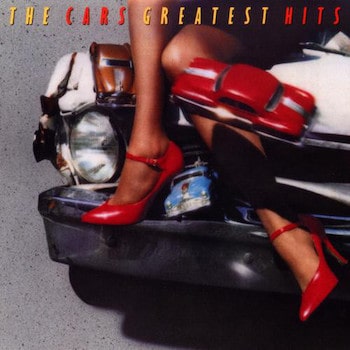 The Cars – Greatest Hits (Elektra)
The Cars – Greatest Hits (Elektra)
1986/Wellington City Magazine
Forever phoney and simultaneously redeeming, The Cars tread a nebulous chasm between that which is real in American pop, and dishonest corporate pap enterprises exemplified by the likes of Toto. Roy Thomas Baker’s glossy production comes ominously close to getting in the way at times, but never buries a good song. Ric Ocasek’s vaguely warped worldview is amply exampled here, along with 12 of his best songs, including of course, ‘Just What I Needed’, ‘Good Times Roll’ and ‘My Best Friend’s Girl’. 7/10
The Cars – Door To Door (Elektra)
1987/Evening Post
The Cars have craft that cannot be denied, but the x-factor is missing from their latest, which still boasts a synthesiser sound straight out of the late ‘70s, and concentrates on the lusher, ballady aspect of their product. The Cars are sounding a little tired. 6/10
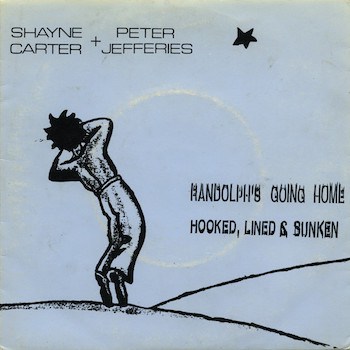 Shayne Carter/Peter Jefferies – Randolph’s Going Home/Hooked Lined & Sunken (Flying Nun 7” single)
Shayne Carter/Peter Jefferies – Randolph’s Going Home/Hooked Lined & Sunken (Flying Nun 7” single)
1986/Wellington City
A surprise from ex-Double Happy Shayne Carter. The A-side is roughly recorded but contains an absolutely affecting dose of melancholy which may or may not have anything to do with the tragic death of a fellow band member last year. The B-side is similarly unhappy. Very unhappy indeed. 8/10
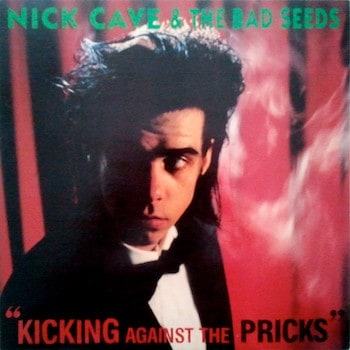 Nick Cave & The Bad Seeds – Kicking Against The Pricks (WEA)
Nick Cave & The Bad Seeds – Kicking Against The Pricks (WEA)
1986/Evening Post
On an album with a title direct from the yellowing pages of The Good Book (Believe It… Or Not!), the unique Cave and his blooming Bad Seeds throw up all over a specially selected welter of other people’s songs.
Cave has traversed an incredible geography of music, myth and emotion in six years. From the screaming destructiveness and cunning rock singer parodies of The Birthday Party through to the howling primitivism of From Her To Eternity is a veritable galaxy of gaping wounds exposed.
But instead of pursuing the specific exploration of the blues capitalised on in the last album, The Firstborn Is Dead, Cave has produced an album of cover versions which take more than a leaf from his own rendition of Presley’s ‘In The Ghetto’.
This uneasy listening covers a range from unknown early blues songs through to ‘60s pop standards and the occasional utter surprise.
There’s the obligatory women-hating blues numbers – including Muddy Waters’ ‘I’m Gonna Kill That Woman’, and a version of ‘Hey Joe’, a song that still seems doomed forever to have the name Hendrix carved into its fibre.
‘Sleeping Annaleah’ and ‘Something’s Gotten Hold Of My Heart’ both ring with a 1960s po pzing, and these forgotten classics can thank St Nick for their fitting revival.
The strangest choices are perhaps the most successful: Lou Reed’s ‘All Tomorrow’s Parties’ is undeniably anthemic, while the dirt under the doo-wop nails of ‘Jesus Met The Woman At The Well’ cannot be denied.
Where Cave sometimes fails to mine the strength of the original to his own distinct application, The Bad Seeds never fail to compensate by forging an approximation of the uniqueness of the material they are conveying without resort to musicianly technique or superficial aping.
But Cave certainly does slide from the sublime to the ridiculous on several songs, most notably the Jim Webb MOR classic, ‘By The Time I Get To Phoenix’, and on the unmentionably cringeable ‘The Carnival Is Over’ which is, mercifully, leftovers.
Presley’s failing and saving grace was encapsulated in that brilliant macho croon, and Cave somehow managed to lampoon and show immense respect for Presley’s guts on his version of ‘In The Ghetto’. Glen Campbell, however, perfectly understated himself on ‘Phoenix’, where Cave again goes for the Presley approach.
That said, the man knows a song when it aches in the right places and why, and you’ve got to give him credit for that.
Kicking Against The Pricks is a record which, however we may choose to misinterpret it, will stand proudly as one of the best redefinitions of strands of the popular folk forms created in the 1980s. 7/10
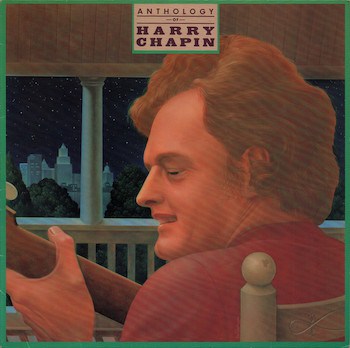 Harry Chapin – Anthology Of Harry Chapin (Elektra)
Harry Chapin – Anthology Of Harry Chapin (Elektra)
1986/Evening Post
Containing song-stories from his most popular period (1972-1974) and including the hits ‘Taxi’ and ‘WOLD’, Anthology exposes Chapin as a craftsman with a humanitarian streak and the ability to convey pathos through his songs. However, they’re consistently marred by a corniness that the best songwriters eschew. The late Harry Chapin was not really that great. 6/10
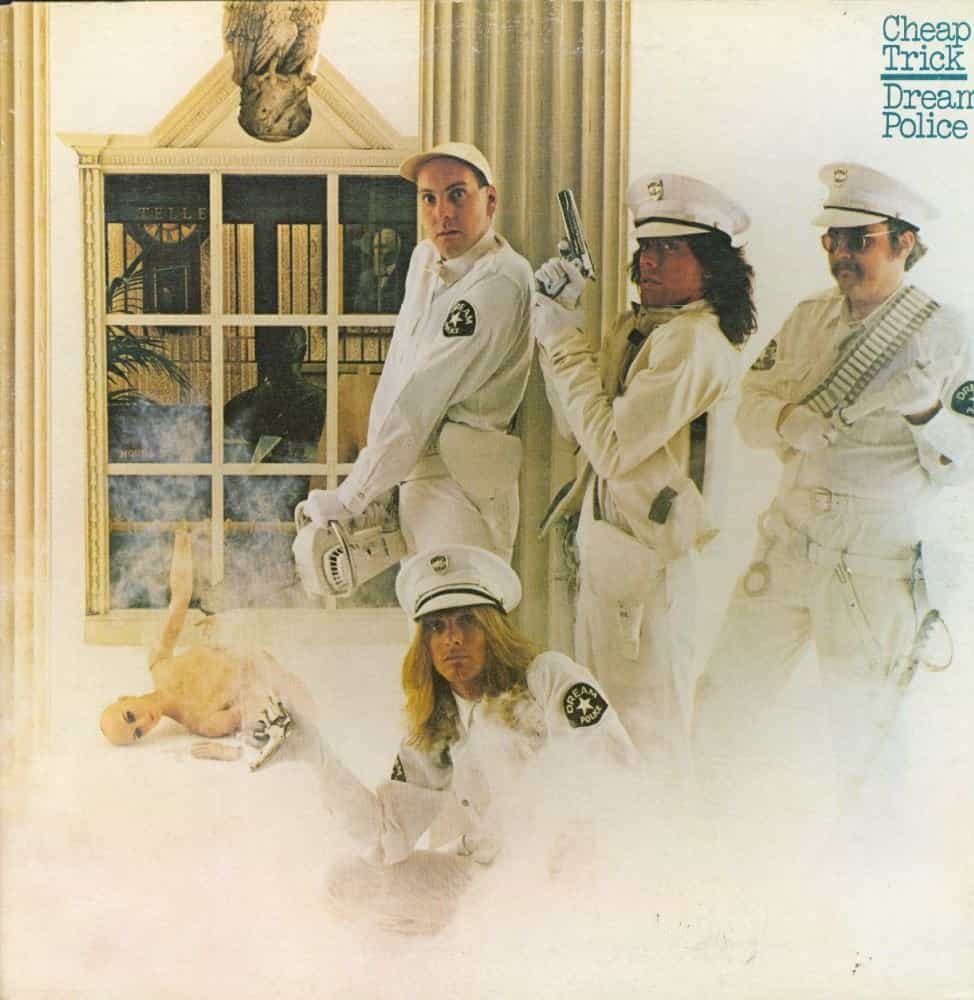 Cheap Trick – Dream Police (Epic)
Cheap Trick – Dream Police (Epic)
1979/Evening Post
Dream Police, the sixth in a line of albums containing ingeniously assembled 1960s-like Beatles/Move/Who-influenced songs, sees America’s Cheap Trick investigating newer pastures.
Intent on delving into the past they may be – until the cows come home, in fact – but the Cheap Trick cheap trick is to transmogrify these influences into a slick, brash, heavy guitar-dominated version of their nostalgic vision.
And that takes talent. Cheap Trick do so with a sense of humour and a personality all their own.
Image-wise, the crazies in the band are Rick Nielsen (guitar/vocals) and Bun E Carlos (drums), while typical pretty-boy pop star types Robin Zander (vocals, rhythm guitar) and Tom Petersson (bass/vocals) complete the lineup. But not one iota of difference to the music does this make.
Dream Police has its share of hard rockers like ‘Writing On The Wall’ and ‘The House Is Rockin’ (With Domestic Problems)’, and even a soft McCartney-like ‘Voices’, but for the first time extended, heavily orchestrated numbers like the anguished ‘Gonna Raise Hell’ are featured. Whether these attempts at being half-pie serious are totally successful is up to the listener to decide.
There is no great depth to Dream Police, but it is a solid, clever rock and roll album, by any standards. 6/10
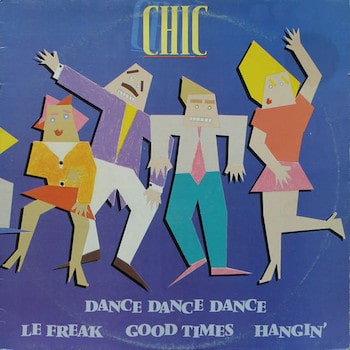 Chic – Dance Dance Dance (Atlantic 12”)
Chic – Dance Dance Dance (Atlantic 12”)
1986/Evening Post
Groove-ee? When the New Romantic hype hit big in 1981, the English made it hip for former sullen-countenanced spiky heads to d-a-n-c-e. It had to happen: the pogo didn’t really cut it as a mating ritual, and no future or not, mating was still a major preoccupation for the day’s youth.
But even during the dawning days of the punk era (15 minutes back in, when was it… 1976?), there was a music that a thousand youngsters with safety-pin hearts were dying to swivel their hips to. American disco, played by blacks.
The aggregation that caught my fancy – and I could then only admit my fandom alone in a car with the radio to distortion point – was Chic. Masterminded by a couple of groovy guys called Nile Rodgers and Bernard Edwards, Chic made some of the most brainless… and grooviest dance records of the day.
Today, it sounds corny. But it hasn’t lost its danceability, because it’s got the groove, and you can’t lose that. So here, to support and reflect a public interest in the big disco hits of the group, is an EP of four of their songs. Don’t resist. Yowza, yowza, yowza. 7/10
Chicago – 13 (CBS)
1979/Evening Post
Chicago Transit Authority in 1970 still stands as this group’s greatest achievement. Here, they play unmemorable, predictable disco and pop, barely utilising their powerful big band sound. 5/5
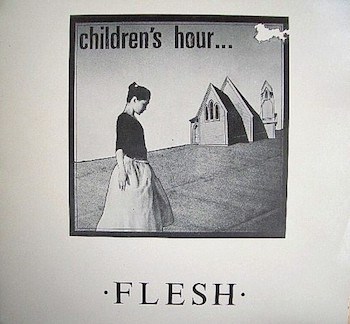 Children’s Hour – Flesh (Flying Nun 12” EP)
Children’s Hour – Flesh (Flying Nun 12” EP)
1983/TOM
Not yer standard Flying Nun release, this. Not a trace of the Velvets here. No, I have a sneaky feeling that the Queen City’s Children’s Hour have been dipping into their Joy Division collections recently. On Flesh they make very unhappy music. Heeey! But that’s okay by me. No mistaking though, Children’s Hour don’t just immerse themselves hook line and sinker into JD’s kinda gloom (eg, Pin Group). Let’s be more specific – Curtis & Co’s spectre shows in the singing (sometimes) and lyrics (often). The difference is in the music, an angry slashing grinding howl which sounds frequently on the edge of a temper tantrum. There is nothing incredibly marvy or 1983 about Flesh, particularly. Thank Gawd for that. 7/10
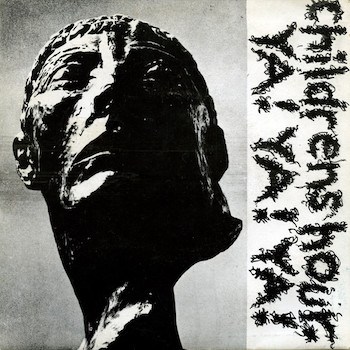 Children’s Hour – Washed Away (Flying Nun 7”)
Children’s Hour – Washed Away (Flying Nun 7”)
1984/TOM
Just when faith was crumbling away, Children’s Hour present us with their finest hour (er, five minutes, anyway). ‘Washed Away’ is unexpectedly low-key, sad. It takes the flip to move back into Children’s Hour terrain; ‘Stuck Pig’ is frantic and angry and it cares. 7/10
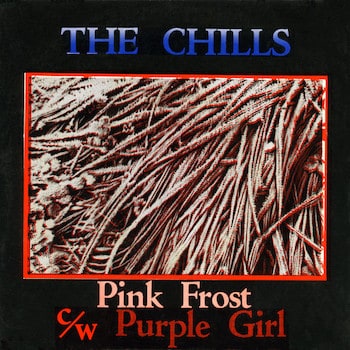 The Chills – Pink Frost (Flying Nun)
The Chills – Pink Frost (Flying Nun)
Single of the year. The first pressing sold out in days in Wellington on word of mouth, and for good reason. Simply chilling. ‘Pink Frost’ is a timeless woolly-sounding melancholy love song that just defies rational critique. I didn’t expect to love it like I do. 10/10
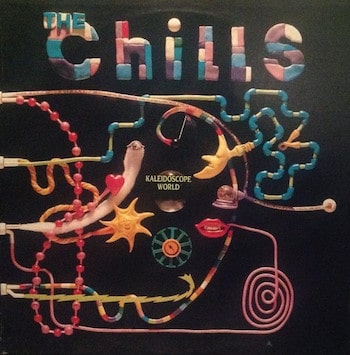 The Chills – Kaleidoscope World (Flying Nun)
The Chills – Kaleidoscope World (Flying Nun)
1986/Wellington City
The Chills are rightfully the most successful New Zealand pop band, and this mini-album collection of their singles and b-sides gives a valuable perspective on their place in pop. Taking a leaf from America’s garage-pop bands of the mid-to-late 1960s (not to mention larger pop phenoms like the Beach Boys) songwriter Martyn Phillips came up with a bunch of perfect dumb pop songs that echoed the naïve charm of NZ’s 1960s success, The Fourmyula, as much as anything else.
Unsurprisingly, The Chills were lashed with praise until, somehow, more was expected of them than neat, fab pop singles. The perfect three are here: the euphoric, romping fun of ‘Rolling Moon’, the unique intro and melancholy ambience of ‘Pink Frost’, and the unforgettable bitter/sweet ‘Doledrums’. There’s the early, pointlessly remixed ‘Satin Doll’ and ‘Kaleidoscope World’, both almost unbearably twee, yet charming. And the b-sides, none of which really add anything to the story.
The Chills make bubblegum pop, but that’s no insult. This bubblegum sticks. If Kaleidoscope World can be faulted, it’s simply because these songs belong on radio, not longplayer. 9/10
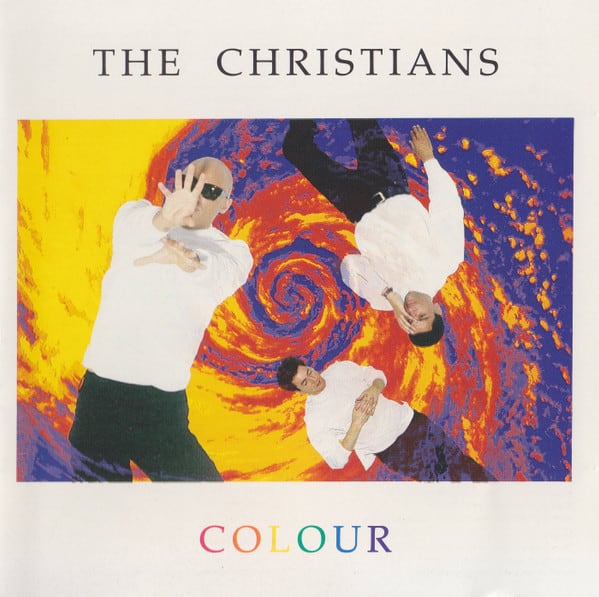 The Christians – Colour (Island)
The Christians – Colour (Island)
1990/RTR Countdown
Okay, so the name’s enough to put you off (don’t worry, they take their moniker from the lead singer’s surname) and they sound smooth enough to appear to a legion of Tracy Chapman disciples. But I can give you more than one good reason why The Christians are something special. Colour – the second album from these white British soul boys – has a cynical but uplifting social conscience, a sinfully simple tunefulness, and a well-rounded palette of sounds with enough interesting nooks and crannies to stimulate the senses. And? Well, the unison, gospel-flavoured singing is really quite special. 6/10
 Chrome – Blood On The Moon (Don’t Fall Off The Mountain Records)
Chrome – Blood On The Moon (Don’t Fall Off The Mountain Records)
1981/In Touch
I fail to see why Chrome are not massively successful. For those who get off on sheer noise, this is the group. That rather shallow point aside, Chrome make the best head music on this planet (so I am reliably informed).
In Chrome’s case, there is a very real difference, however. The Grateful Dead, for instance, may have once provided a great setting and atmosphere for copious drug-taking but rarely has their music been strong enough to emulate the actual experience. In other words, Chrome can take you on a trip or three, and you’ll only have sore ears.
Directions: set the dial for the heart of the sun: loud. Chrome is not permissible as background static. Just sit down, dammit – open your mind and succumb. This is colours in your brain music.
Chrome is the original creation of Americans Damon Edge and Helios Creed. It’s a sound borne of the giant unscrupulous overdub, but with saner echoes in a thousand rough-shod garage bands across ‘60s America. Chrome is “hit-yourself-over-the-head time and wake up there’s been a slaughter here!” shock tactics. The ultimate headphone phenomenon, Chrome use layered studio-dub-textural effects and intensities that no other bands have attempted, to my knowledge.
Okay, end of rave. This is a review of Blood On The Moon, and all I can say is it’s bloody disappointing, in the light of previous journeys such as Alien Soundtracks, Half Machine Lip Moves and the radically commercial (by comparison) Red Exposure from last year.
Where Red Exposure was the total trip (buy only UK or Japanese pressings for proof of the pudding) with sound that simply punched the stomach, Blood… retraces steps a little but at the same time becomes milder. It’s got burn-out symptoms.
We get the old rifferama but it’s not as convincing, except for the odd reminiscent master-blast from the past. The disc is recorded almost live in the studio, and the duo have hired an outside rhythm section. For some inexplicable reason, the album as a result lacks any real guts or depth of sound. If it had even a halfway decent bass sound the album would be much more acceptable. 6/10
Chunky A – Large & In Charge (MCA)
1990/RTR Countdown
Another fat rap act? Rap’s answer to Weird Al Yankovich: funny but forced. 5/10
1983/TOM
These koalas played Sweetwaters. How tedious they were! Byrding it up on RWP, what pretentious pap posers they seemed! Yet, Séance is pleasing, dreamy, playable. Many criticisms will be levelled at this record, and they will be valid, but out of context.
Séance possesses an intimate ambience, a sound crafted to waft through suburban stereo systems. Leader Steve Kilbey’s doe-eyes stare meaningfully from the back cover. He must be a sensitive soul, singing lyrics like: “Salty tears are wasted, children lie awake/Put your head into my hands/don’t let your spirit break.”
The music’s seductive soundscape floats by, a mystical, less bleak Cure. Parents couldn’t complain about the quiet ones. Like ‘It’s No Reason’, which has got ‘string arrangements’ – attempted Mantovani but sounding instead like a Mellotron gone loopy. Your big brother will get off on the noisy ones, especially ‘Travel By Thought’, this generation’s ‘Third Stone From The Sun’. Hey, remember Jimi Hendrix? But you, young lady, like the melodic, poppy numbers. You especially like the way Steve (Kilbey, that is) reaches boldly for those lower notes and misses by the proverbial mile. Rilly, rilly touching.
Séance, as I said, has its bad points. The songs themselves are at times of questionable construction. But they do use space and layering effectively, and somehow the sound here is spare, deep and warm. It’s not an ‘experience’, nor is it particularly compelling, but I know I’ll be listening to it again.
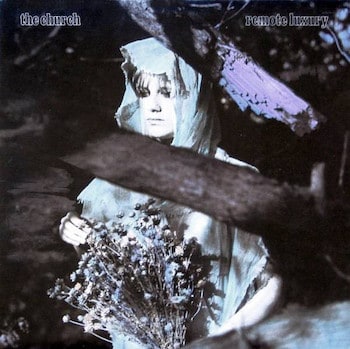 The Church – Remote Luxury (EMI)
The Church – Remote Luxury (EMI)
1984/TOM
A definite departure from that famous winsome wimpiness and jangled Byrds guitar, I thought. ‘Maybe These Boys’ instead spreads fake Iggy Pop circa The Idiot. For the rest, however, the change is merely superficial. They’ve added keyboard and production touches to this five-song EP which turn the jangle into a mangle and highlight the embarrassing inadequacies of The Church lyrics. Yes, Remote Luxury does have its moments, typified by sections of ’10,000 Miles’. Unfortunately, even within the song, the tracing paper chorus lets it down. 5/10
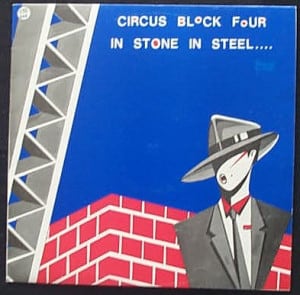 Circus Block Four – In Stone In Steel (Jayrem)
Circus Block Four – In Stone In Steel (Jayrem)
1984/TOM
You thought the video was fab. Now catch the record. An irresistible niggly bass-driven hookline keeps you, well… hooked, line and sinker while the singer beats you into submission with big heap scrambled words. I don’t know what it’s about, but it should be heard. 7/10
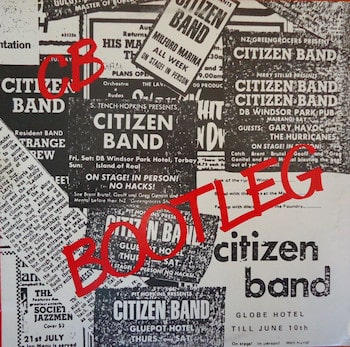 Citizen Band – CB Bootleg (CBS)
Citizen Band – CB Bootleg (CBS)
1980/Evening Post
Obit: CB Bootleg is the last vinyl from Citizen Band, one of New Zealand’s better late ‘70s groups.
To my knowledge, it’s the first real live rock’n’roll album recorded in New Zealand and therefore something of a victory.
The sound is thankfully better than most unofficial bootlegs, and CB run through many of the better songs from their two studio-recorded LPs, most notably ‘The Ladder Song’, ‘Rus In My Car’, ‘Julia’ and ‘The Office Come Alive’.
It shows the band are no slouches musically, although a weariness can be sensed (the end of the road?) in the playing.
It’s been a sad year so far for local group demises, and this is a fine parting tribute to one of our best. 7/10
Richard Clapton – Hearts On The Nightline (Interfusion)
1979/Evening Post
Australian singer/songwriter (no relation to Eric) of no mean repute shows what success is all about: compromise. He uses a hotch-potch of styles here and plays impressive guitar. 5/5
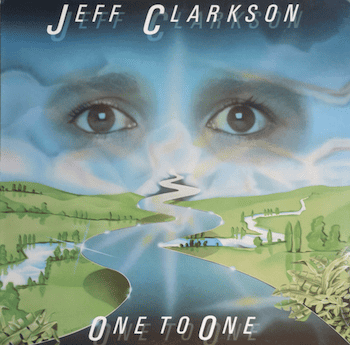 Jeff Clarkson – One To One (Toast)
Jeff Clarkson – One To One (Toast)
1984/TOM Magazine
In troubled times humour often has a premium on it. Better po-faced than desperate laughter but…
Jeff Clarkson has clearly put many a furrowed brow and hard day’s toil into his debut LP, One To One. It has the feel of an airless, spik-and-span office; perhaps a 9-to-5er in the big black BNZ building could relate to its distillation, its pretend prised smile in the face of an alien environment.
Jeff Clarkson is like a microcosm of the average city-dwelling individual: detached from reality, insular, trying to communicate something of individual spirit, but ultimately becoming a tool of his world.
The message of the songs is nostalgic but hopeful. The tone is weary, the sound is high-tech synth-pop. The tunes are memorable, the singing less than authoritative.
My first reaction was to dub One To One ‘cheesy’. Second thoughts and listenings later, it emerges as an honest effort with obvious AM-radio potential, but a heavily flawed and seriously under-humoured one at that. 5/10
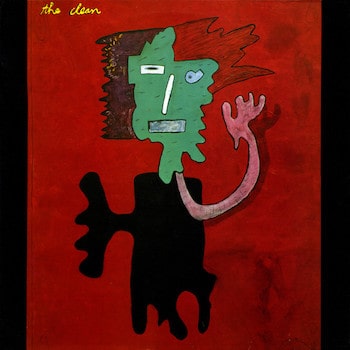 The Clean – Live Dead Clean (Flying Nun)
The Clean – Live Dead Clean (Flying Nun)
1985/Wellington City
More brilliant muck from the vaults, this mini-LP of live 1981 Clean proves that in hindsight the South Island’s big indie band were well worth the attention lavished on them at the time. Artistically A-Grade, Live Dead Clean makes available several unreleased songs which see the Clean exploiting a fine sense of riff, repetition and rage. Their raw, un-guitar-like interplay has a passion that one rarely finds in rock music, or art, and which virtually never finds its way to the top of the commercial hierarchy. Dirty and not to be missed. 8/10
Johnny Clegg & Suvuka – Third World Child (EMI)
1987/Evening Post
When those delicious African guitars are sounding the feeling is alright, but this contemporary South African music – much like our own latter-day Herbs – trades its real identity for rock anonymity. And like Herbs, the lyrics are well-meaning but stop short of meaningful. 5/10
Johnny Clegg & Suvuka – Cruel, Crazy, Beautiful World (EMI)
1990/RTR Countdown
Pleasant, danceable African pop, but it lacks the joy and infectiousness of the best African music and the irresistible hookiness of the best pop. 5/10
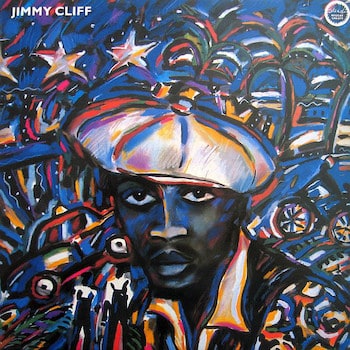 Jimmy Cliff – Reggae Greats (Island)
Jimmy Cliff – Reggae Greats (Island)
1986/Wellington City
It’s unusual to hear Jimmy Cliff’s name mentioned in the same breath as Marley, but the man’s importance in reggae cannot be underestimated. Long before the general public had heard of this strange music calling itself ‘reggae’, let alone Nesta Bob Marley, Jimmy Cliff was writing lovely reggae-pop and creating an international demand for what was to come later. Between 1967 and 1973 – the years this compilation encapsulates – Cliff wrote two of the loveliest songs ever committed to vinyl, ‘You Can Get It If You Really Want’ and the magnificent ‘Many Rivers To Cross’. He also contributed to the world the first signs of Jamaican political musical sensibility in songs like ‘Vietnam’ and the song and film ‘The Harder They Come’ (the film in which he played the lead part, and which put Jamaica on the musical map). An essential selection of Cliff’s light but lovely reggae, which features most of his best. 8/10
1981/Evening Post
Canadian singer-songwriter Bruce Cockburn evokes emotion with his minor chord melodies and tired-sounding voice in much the same way as Neil Young. While he lacks Young’s frayed-edge howlings, his music is imbued with a deep melancholy as well as a warm, jazz-hued humility.
Cockburn is that rarest of rare species: a thoughtful, unrighteous Christian. This man hasn’t closed his mind in order to preach gospel; he has opened it up and is still searching and pontificating.
On Humans, he is sometimes lyrically naïve, but always heartfelt and honest, as on ‘More Not More’. His music is principally acoustic, soft and peaceful but multi-layered. A welcome change. 7/10
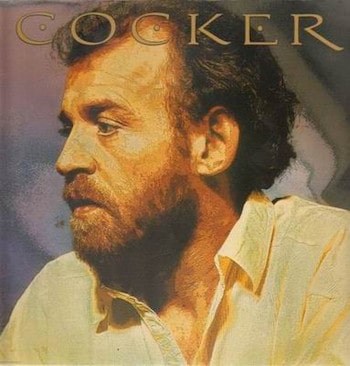 Joe Cocker – Cocker (Liberation)
Joe Cocker – Cocker (Liberation)
1985/Wellington City
Joe Cocker’s raspy voice could once speak of desperation, portray a pulsing, naked emotion that Ray Charles had simply nudged awake. Sad to say, he hasn’t got a voice left capable of conveying anything; on Cocker, he merely sketches around songs not worth singing. And when he rubs his sandpaper residue against something good – as on Marvin Gaye’s ‘Inner City Blues’ – he slips on a banana. A rotten one. 3/10
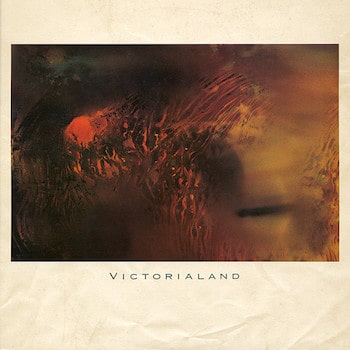 Cocteau Twins – Victorialand (4AD)
Cocteau Twins – Victorialand (4AD)
1986/Evening Post
Indulge me. I feel a rave coming on. Accursed fanhood still plagues this cynic’s tortured soul. Excuse me, while I take a bow. Elizabeth Frazer’s trilling makes one rather weak in the knees.
The prosecution would have it, M’Lud, that what we hear in the grooves of this round, black thing are the effete, mannered, powdered, twee, pretentious, idle come-ons of a dying England lying back, taking it, and dreaming of a distant past on the same shore.
And while there are doubtless elements of some of the more elegant aspects of England’s decay (through a soft-focus lens) on Victorialand (and its predecessor, Treasure) these traits are reflections on a waning culture as opposed to a distinct criticism of the Cocteau Twins’ unique vision.
Anyway, just for now, stuff the back-to-Africa brigade. We all like rhythm and musical synthesis, but sometimes it seems as if there’s a conspiracy against all knowledge and appreciation of England’s ancient and amazing (and very dark) past.
Cocteau Twins are Liz Frazer and Robin Guthrie. They go out together, share a home together, and love their cat. Don’t we all. They enter a studio and make magic. Treated, echoed and repeated guitar phrases take compelling sound pictures. On top, Frazer adds her wordless vocal melodies; unlimited expression (sometimes in the space of one passage) from soaring operatics to paganistic chants to a simple, primal yell.
On Victorialand there are no drums (to speak of). Most of the guitar playing is acoustic. Yet the endlessly layered, shifting patterns of guitar, voice and barely discernible instrumental additions create a music which is like no other; accessible yet totally at odds with both pop and classical tones. But if anything, their music is a natural return to the European classical traditions that rock advocates have sought to banish over the past 30 years.
Cocteau Twins are virtually unknown to all but a small clique in New Zealand. Are our dreams really as withered up as all that would suggest? 9/10
Leonard Cohen – The Future (Sony)
1993/RTR Countdown
He’s well over 50 and he can’t hold a tune but he’s awesome! Leonard Cohen is one of the few populist poets of substance, and one of the few artists anywhere who could write a song about the end of the world – a song which comically manages to include in its rhymes references to both anal sex and maniacal mass murderer Charlie Manson – that people probably still play in fancy restaurants! The power of words. 9/10
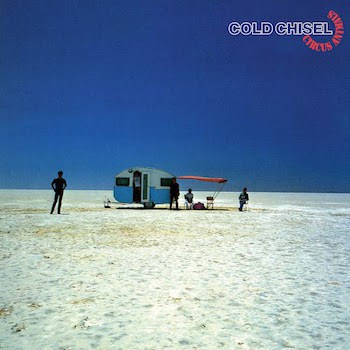 Cold Chisel – Circus Animals (WEA)
Cold Chisel – Circus Animals (WEA)
May 1982/In Touch
It’s a problem of our time! Why oh why? Why are Cold Chisel so big? That’s the question on our lips. ‘You Got Nothing I Want’ is the first song here, and I’m tempted to voice that as my opinion of Cold Chisel. But that would be unfair. This was going to be the big put-down. The anti-Chisel tirade all Oz-rock haters have been hankering after. The general idea was a patronising look at the social implications behind Chisel’s current success. But that’s not to be. All I can say is that divisions and subcultures have existed within rock before, that Chisel and co are one, and that it’s frightening because there’s nothing here that I can relate to, even after repeated listenings. I cannot explain it. It would appear that Oz rock is entertainment in rock music clothes, devoid of its original intentions. That’s what I’d like to think. Meanwhile, Circus Animals is big news. I guess what they’re doing they’re doing the best they can. They write songs with melodies; they’re not brilliant, but… The music is uninspired but very rocky. The gravel voice is instantly recognisable. Oh fuck. Review Number 2: Cold Chisel – Circus Animals (WEA). These guys are onto something! They’re the people’s choice! Forget the media! Yay! This is the modern dance! Hi there, yobboland! 3/10
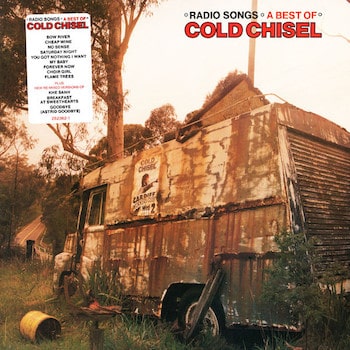 Cold Chisel – Radio Songs (WEA)
Cold Chisel – Radio Songs (WEA)
1986/Wellington City Magazine
I never could understand the appeal. Jimmy Barnes sounds like a delinquent Sting throwing temper tantrums with chuddy in the cheeks and a fishbone stuck firmly down the vocal passage. How could such a blunt bunch of bozos get so popular? In their scheme, whenever the tunes are heading towards sensitive territory, it’s time to unleash another mediocre guitar solo and accelerate that Ock rock thud. They don’t come much less subtle than Cold Chisel; even the name sounds like a brand of Australian beer. On this collection pub rock goes radio acceptable, so these are the least rousing jock itch songs. The notable exception to the rule is ‘Forever Now’, which boasts a memorable melody. The lyrics almost manage eloquence on occasion, but by and large Cold Chisel lacked any definable character. Oh yeah, why does Jimmy Barnes have big nostrils? So he can change gears manually, of course. 2/10
Natalie Cole – Everlasting (Manhattan)
1987/Evening Post
Cole’s return from years of drug abuse fails to ignite; she can sing sadly (‘I Live For Your Love’), get funky (‘The Urge To Merge’) and even drag in a few contemporary elements (the rappy ‘Jump Start’). The songs are formula, however, and the treatments infused with the kind of 1970s soul cliches Michael Jackson’s latest avoids so well. 5/10
Alice Cooper – Special Forces (WEA)
1981/In Touch
A generous dose of audio effects fail to rescue Alice from his sad coop of dated irrelevance. Fans will enjoy, but school’s been out a long time now and this devastatingly ordinary hard rock reveals nothing new about AC or us. Listenable. 5/5
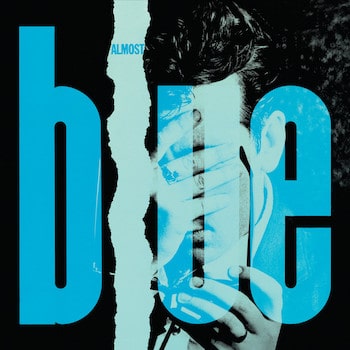 Elvis Costello & The Attractions – Almost Blue (F-Beat)
Elvis Costello & The Attractions – Almost Blue (F-Beat)
Nov 1981/In Touch
Well-well, what indeed can one say? Shock-horror Elvis goes redneck! Hey, did it not take Elvis P 20 years to put on as much weight as Elvis C has in less than a year? Huh? Yeah, well enough of that.
Almost Blue is almost Elvis C’s album of country music standards; Costello doing for country what Joe Jackson did for swing in Jumpin’ Jive. That album simply sought to nurture an appreciation of that musical classification in the hearts of the young. It was basically just diversionary fun. Almost Blue takes itself seriously. This is real country music and real country songs. Lord knows why Costello didn’t make a total arse of himself: the most I would have expected was faithful and slightly embarrassing second-rate versions.
Instead, this is one of the most refreshing LPs I’ve heard all year, in a funny way. The obvious highlight of course is Costello’s voice, which can only be described as bee-youtiful in the particular context. It yearns.
I don’t like Costello much. And I generally hate most of what passes for country music, but this is indefinably different. If you’re a broken-hearted sucker like me, why don’t you drown yourself in the sweet misery of songs like ‘Honey Hush’, ‘Good Year For The Roses’ and ‘Why Don’t You Love Me Like You Used To’?
If it’s true, as Zappa says, that broken years are for assholes, then perhaps this is the only sort of music to prevent you being one. 7/10
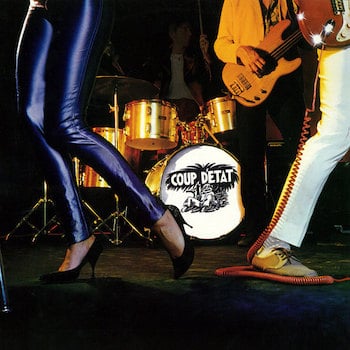 Coup D’Etat – Coup D’Etat (Vertigo)
Coup D’Etat – Coup D’Etat (Vertigo)
1981/Evening Post
The only song that completely overcomes the stilted, contrived, formula nature of this local album is the novelty single, ‘Dr I Like Your Medicine’, and of course, that has been played to death through radio over-exposure.
Several of the tunes are derivative to the point of sacrilege and, while catchy, the majority of tracks are stillborn. Its potential is well disguised. 5/10
The Creeps – Blue Tomato (WEA)
1990/RTR Countdown
Peculiar, competent Swedish r’n’b dressed up in today’s fashions. Interesting touch: an organist! 5/10
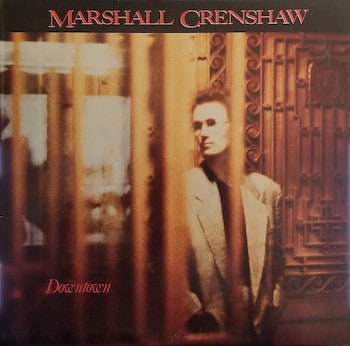 Marshall Crenshaw – Downtown (Warner Bros)
Marshall Crenshaw – Downtown (Warner Bros)
1986/Wellington City
A record by a man with a name like MARSHALL CRENSHAW is about the last thing I’d buy, if the opportunity presented itself. Hopefully, the rest of the world isn’t ‘nameist’ like me, because Downtown is a thoroughly good and worthwhile record. Crenshaw – with the eccentric T-Bone Burnett in a production capacity – has made a record of country music that rocks, an album of songs that sing, and a selection of thoughts that tell. Distinctly and distinctively American, this music has core and a Big Heart, it’s subtle AND strong, it’s traditional AND different. One minute it’s echoing early Elvis or Orbison and the next T-Bone’s twinking away at an electric sitar, or slamming a Linndrum. And it gets an extra half star for giving the world song titles like ‘Terrifying Love’ and ‘I’m Sorry (But So Is Brenda Lee)’. 7/10
1980/Evening Post
Don’t shed any tears for the Crocodiles’ Tears. Whether it’s bought or left to rot in deletion sale bins is of no consequence (save the group’s commercial success and future.) The artistic and creative achievements of this, the debut album by Wellington band The Crocs, will stand regardless.
The crying shame is that Tears is as near to the perfect pop album as you’re likely to get, with at least 15 percent of its material worthy of radio play, yet it is unlikely to achieve its commercial aim. Why? The promotion is not there due to understandable record company attitudes: they are unable to recoup their investment in the current climate.
Tears combines the commercial pop sensibilities of ‘60s bands with the technical production values and maturity of group concept demanded by the more discerning ‘80s audience.
Jenny Morris (lead vocals) and Tina Matthews (bass and vocals) come fresh from their first band, the all-girl Wide Mouthed Frogs, while Fane Flaws (lead guitar and vocals), Peter Dasent (keyboards and vocals) and Tony Backhouse (guitar and vocals) formed the nucleus of Spatz. Not to forget Bruno Lawrence (drums), granddad of New Zealand jazz-rock, formerly of (among others) Quincy Conserve and Blerta.
Tears is the best New Zealand-recorded album for some time, and definitely one of the better releases in the first three months of the 1980s.
The musical style owes a little bit to everybody, but thanks to Jenny’s vocal contributions is unmistakably Crocs. It’s best described as melodic pop with the occasional hint of new wave, and a little jazz edging in sideways. Add to this a lyrical wit and a producer with a flair for the odd twist (Glyn Tucker Jnr), and we have an album of unmistakable class.
All the tracks are of a high standard. ‘Tears’ (the title track and should-be number one) has a nostalgic, slightly satirical bent, but Jenny sings so emotively that it has to be taken seriously. ‘In My Suit’ is the most aggressive number, incorporating a James Bond sound-alike riff and ending in loopy mayhem. ‘New Wave Goodbye’ and ‘It’s The Latest’ both aim well-trained barbs at the music industry, cutting surprisingly close to the bone. So much so in fact that you wonder if the Crocs are even lampooning themselves: “It’s the latest/and it’s the greatest/And it’s on the radio/it’s the greatest cause my DJ told me so. Here it comes around/played all over town, but it’s just recycled sound. Here’s another melody/we stole from the Beatles/I forgot the song/if you recognise it/you don’t win any prizes/you’ve been around too long.”
All very astute observations. But what are they doing about it?
‘Any Day Of The Week’ and ‘All Night Long’ could both belong to the 1960s save for the fresh sound the group somehow manage to generate. Is this at last, the missing link between the Beatles, the Move and the Raspberries?
‘Young Ladies In Hot Cars’ was first attempted on Wellington’s Homegrown album last year. Here it’s updated, re-energised, a good rocker, untypical of the Crocs’ sound though containing the classic line: “I’d like to flood her carburettor.”
‘Whatcha Gonna Do’ is good rock but somewhat nondescript in relation to the rest, ‘Ribbons Of Steel’ is an anthemic-type song co-written with their patron, the legendary American Kim Fowley, and ‘Working Girl’ ends the album on a note of social realism.
It’s a fun album of lasting merit. 8/10
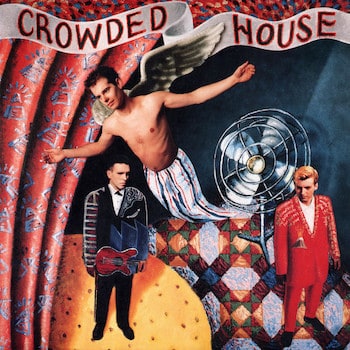 Crowded House – Crowded House (EMI)
Crowded House – Crowded House (EMI)
1985/Wellington City
The younger Finn Brother, Neil. His new band. Gee, I still remember this guy serenading us with sweet Paul McCartney songs on some support stint in the ‘70s. Where were we? That’s right, my friends, Neil Finn. Crowded House. Now, Neil Finn writes awkward pop songs because while he tries to be so darn conventional, his neuroses won’t stop reminding him that he should be oh-so Adult, and write something intelligent about grownup things like, well, relationships. All the right moves are made. The chord changes are correct. There are moments of playfulness, of brashness; qualities sorely lacking in big bro Tim’s second solo outing. It’s a mixed bag but it always plays to a nearly empty room in my house. 6/10
The Cult – For Rockers Ravers Lovers And Sinners (Beggars Banquet/Virgin)
1993/RTR Countdown
The Cult are a singles band, really. Even then, too much is too much! When Ian Astbury has a good propulsive, sex-mad rock riff happening behind him, he can open up valleys with his rebel yell. Destined neither for the top end of rock cred, not for cult notoriety, The Cult are a group who facilitate the expression of youthful energy and rage against the machine. No more, no less. 6/10
Culture – Vital Selection (Virgin)
If you only buy one of Virgin’s Vital Selection compilations, make it this cultural potion – radiant, beautifully simple vocal-based reggae which translates into both top dread and tune. If it doesn’t make your grey day worth living then life is a sour song. Try ‘Stop This Fussing And Fighting’ for starters and feel like embracing the next person that walks in the room. There’s lurve being generated here. 8/10
The Cure – Boys Don’t Cry (Stunn)
1980/Evening Post
Boys Don’t Cry is basically last year’s debut, Three Imaginary Boys, with a few changes. A few album tracks are chopped off here and there and replaced with singles A and B-sides. But you’ve got both the first album and the singles, right? 7/10
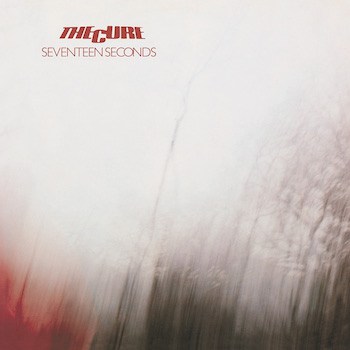 The Cure – Seventeen Seconds (Stunn/CBS)
The Cure – Seventeen Seconds (Stunn/CBS)
1980/Evening Post
Here’s culture for you, Mr M. The Cure is one of the most artistically serious, least gimmick-orientated bands to have surfaced in the past few years.
Expatriot New Zealander Chris Parry formed his fledgling Fiction record label in Britain in 1978 and his first signing was The Cure, the band largely responsible for Fiction’s success.
The first album, Three Imaginary Boys, was a brittle, quirkily hotch-potch exercise but it was a mite too freeze-dried as performed by the then three-piece. Seventeen Seconds, the second album, sees the band grow into a four-piece with Simon Gallup replacing Michael Dempsey on bass and Matthieu Hartley recruited for the keyboards.
It marks a distinct change of emphasis for The Cure, displaying a minimum of the band’s early punk influence – a musical rather than attitudinal change. Seventeen Seconds consolidates the band’s cult status, and proves that one can create in the genre loosely defined as rock, and still be subtley undermining of current retrogressive trends existent within the same genre.
It’s a dauntingly original experience, though the first few listens may well turn the easily mutinous to opinions otherwise, as the performance appears lacking in commitment, the beat barely ticking over at times. Don’t pay attention and you may as well be listening to Sky – Robert Smith’s guitar sound could easily be mistaken for the under-amped electric of John Williams – as the general feeling is very easy listening.
But despite this, these perceptions are rather misleading, as underlying the pretty perforations and the almost apathetic sound, is seriously intended, emotional, doomy music. The addition of keyboards, in fact, is so understated as to be virtually inaudible, mainly serving as a textural agent, but methinks Hartley also contributes highly effective, uncredited electronics.
Seventeen Seconds is very much a brave departure for a band which has an obvious talent for the perfect pop single when they put their collective mind to it. On the other hand, it’s accessible (dangerously so, it could get in the wrong hands), and therefore could open the band to a much wider audience with a minimum of hype: the way they want it.
What’s more, it bears many, many plays, something significant emerging anew from the grooves on each successive spin. I haven’t even scratched the surface of this Cure as yet.
Seventeen Seconds is a rare achievement. An album of complete seriousness, yet devoid of pomp and pretence. And it entertains. Something to laud. And we’ll see them in person in August. 10/10
The Cure – Faith (Stunn)
1981/Evening Post
Faith, released yesterday (18/5/81), will inevitably be likened to its brilliant predecessor, Seventeen Seconds. It is, in fact, a very different proposition. Faith is slower and bleaker. The textures weaved are deeper.
The Cure membership’s obsession with Joy Division has given birth to Faith, which dwells on similar subjects to that defunct group: doubt, death, fate, faith. Not altogether the healthiest of obsessions, The Cure manage to carry it off without emerging as another drowning Joy Division copyist band.
The Cure are always The Cure, regardless of current influences. They have a sound of their own. If anything, this new fatalism has produced a Cure with an inner strength that was formerly obscured.
‘Primary’ is the only conceivable single here. The rest are desperate cries and funereal marches. The slower the songs, the more reminiscent of Joy Division they are, yet these are the most powerful and the ones I come back to regularly.
Despite the departure of keyboardist Matthieu Hartley, the three-piece group produces lovely sounds of deep dimensions. Dronish keyboards are prominent in the slow songs, as is bass. Peculiarly, guitar is absent from several tracks and several basses are instead deployed. The Cure may not be innovators but that makes them no less important. 7/10
1981/In Touch
The Cure, everyone’s favourite band name-drop last year, have become obsessed with the ghost of Joy Division. (Joy Division being this year’s favourite band-name drop). In fact, Faith literally reeks of JD from beginning to end – the same relentlessly desperate fatalism permeates through the eight tracks. Sample these titles: ‘The Funeral Party’, ‘Doubt’, ‘The Drowning Man’, ‘All Cats Are Grey’.
Already, the critics are sticking their knives into what is being billed the most contemptible piece of rubbish since the last Pink Floyd outing. The critics write that The Cure offer only pessimism, and that they virtually drown in self-pity, where at least JD were questioning and seeking to understand. And in a way they’re right, but the laughing and the fun’s gotta end somewhere.
No, The Cure don’t appear to offer much hope on Faith. No, they don’t uplift the soul and tingle down the spine like JD. No, Robert Smith’s lyrics don’t stand up to scrutiny like the truly beautiful words of Ian Curtis.
But the mere fact that The Cure are playing music like this implies that there is some hope – or they themselves would not bother. The music itself sounds the sentiments better than lyrics ever could – and that’s where appraisal comes down to personal listening and interpretation of sounds.
Only three albums on from their first, Three Imaginary Boys, and The Cure is scarcely recognisable as the same band. That record was such a bristling, fresh debut. It rang with ideas still waiting to be followed up. The band could be excused for taking an about-turn and walking backwards to the beginning. Instead, the three-piece hired a keyboardist who filled out the sound on one of the best albums of 1980, Seventeen Seconds. It had a totally distinctive sound and slow, indescribable music.
Faith is in many ways a Seventeen Seconds Mark II. Despite keyboardist Matthieu Hartley’s absence, the textures are even deeper, more intriguing, totally immersible. The effect is of a stronger, headier brew than previously.
As Seventeen Seconds took months to sink in properly, this is also one to absorb slowly but thoroughly. I’m not going to pass verdict at this stage, but at the moment it’s a case of total absorption; something which happens decreasingly these days.
The songs can be described in batches depending on tempo. ‘The Holy House’, ‘Faith’, ‘All Cats Are Grey’ and ‘The Funeral Party’ are all snail-pace slow, the latter two with funereal orchestral synthesiser droning away. Mid-tempo are the texturally magnificent ‘Other Voices’ and a particularly sad one, ‘The Drowning Man’. The single, ‘Primary’, is faster, as is a furious, gnashing number, ‘Doubt’.
As befits the record label: stunning. 7/10
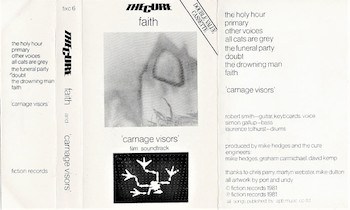 The Cure – Carnage Visors (Fiction)
The Cure – Carnage Visors (Fiction)
1981/In Touch
Carnage Visors is a special addition to the cassette version of Faith in Britain. It’s 20 minutes of mood music which builds up as the track progresses. It was created to complement the animated film of the same name which The Cure use at the beginning of their shows instead of a support band. One can imagine it played in a concert environment – quite an effective build-up to the main spectacle.
Although the sound of the instrumental piece is distinctly The Cure, it is nevertheless quite different to The Cure as a ‘rock’ band: the bass is extremely heavy, but the drums and guitar are given a substantially different mix. Synthesizer is more prominent, and what sound like maracas are used for ‘atmosphere’. Its climaxes are quite intense, but I challenge anyone to sit through the thing without losing attention.
Whether Carnage Visors works in the context for which it was intended I guess we will see in August. On tape, it doesn’t quite come off. 6/10
Curiosity Killed The Cat – Keep Your Distance (Mercury)
1987/Evening Post
Record company dream come true. Genetically-engineered designer pop-cum-funk. Unlistenable. 2/10

